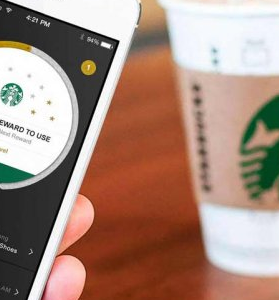Loyalty Online For Online retailers, the creation of loyal customers is elusive and challenging. On the high street, good location, quality customer service and an inviting environment can entice customers to keep coming back.
In the online space, deals are a driving market force and there is no shortage of services and tools to help consumers find the best deal on the web. Sites such as Snaptaps, which alerts consumers to price drops, or google shopping, that allows consumers to compare price, make it very easy for shoppers to find the deal that saves them the most of their hard earned cash.
Perhaps creating loyal customers online is as simple as constantly competing and matching competitors for price. However, the biggest online retailer Amazon by no means always offers the lowest price, but arguably has the most loyal customer base. I certainly know that personally, my first thought when looking to buy something online is to check Amazon. Amazon has to an extent made a loyal customer out of me, by being the most convenient and simple. Amazon have a large catalogue, all my details already, and my trust and confidence from numerous previous successful purchases.
So how can other retailers compete?
There are quite a few interesting ways in which retailers can and have tried to encourage loyal customers. We all know about reward and loyalty points earned when using your card: a seamless integration between the physical and online versions of such systems can encourage consumers to come back and use high-street retailers’ online presence too. This works on the basis of rewarding customers for transactions, pretty standard fair. There are some companies out there who approach loyalty in a little more unique way though.
For example Greek start up Juengo in 2013 proposed the idea of awarding customers loyalty points to spend not when they completed transactions but when they completed specific actions. In this system, actions such as ‘liking’ a Facebook page or signing up to weekly newsletter earned consumers rewards. An interesting approach but one I’m hesitant to say is an ideal solution. One imagines it only works superficially, with some consumers jumping through hoops just to get the points to make that one purchase they wanted. How it makes genuine long-term loyal customers is questionable.
My favourite of these alternative solutions, is one proposed by an American company eGood. Their solution to creating loyal customers is to commit business to donating a percentage of their charge to consumers to charity. While eGood is a high street solution, the principle could be quite easily applied online. It’s an elegant means of creating loyal customers. If two retailers had a match on price for my latest Batman T-shirt, you know the one that donates to charity is the one I would choose. Hell, it’s what Batman would choose. There are no real losers in this loyalty solution. Consumers feel better about their purchases, retailers secure returning customers and charities are helped out: lovely.
So there are some unique ways in which online retailers can try and engineer loyalty, but when push comes to shove, they can come off a bit gimmicky. I think what creates loyalty online is convenience, security and trust. At the moment those attributes are very difficult for sites to establish, unless they are the big power houses of online retail.
Implementation of the Onescan system would be an excellent solution for smaller retailers that would allow them to get back on a level playing field. Onescan eliminates the inconvenience of registering with sites or having to remember usernames and passwords. It’s fully able to work with and incorporate existing loyalty and reward point systems. Most importantly, the Onescan platform is built with security and safety at its core. The ‘Onescan padlock code’, takes the doubt out of purchases. Your details are safe and secure. Implementation of Onescan, while still not universal, is a differentiator that provides the convenience, security and ease needed to create loyal customers.
By Matthew Taylor

